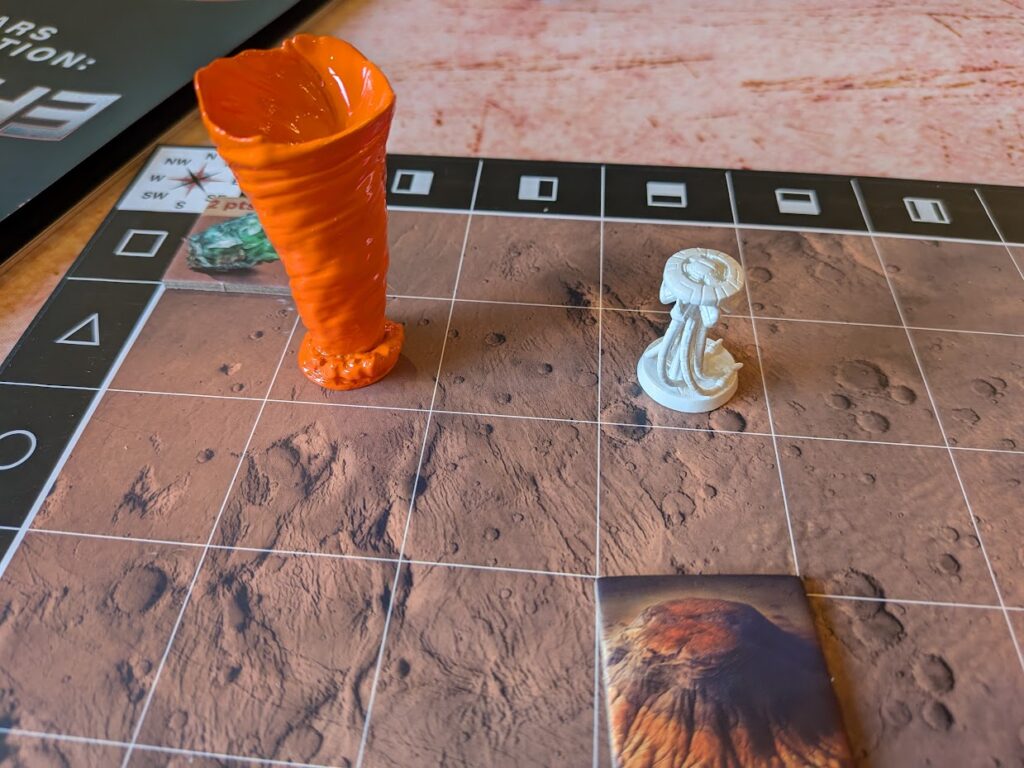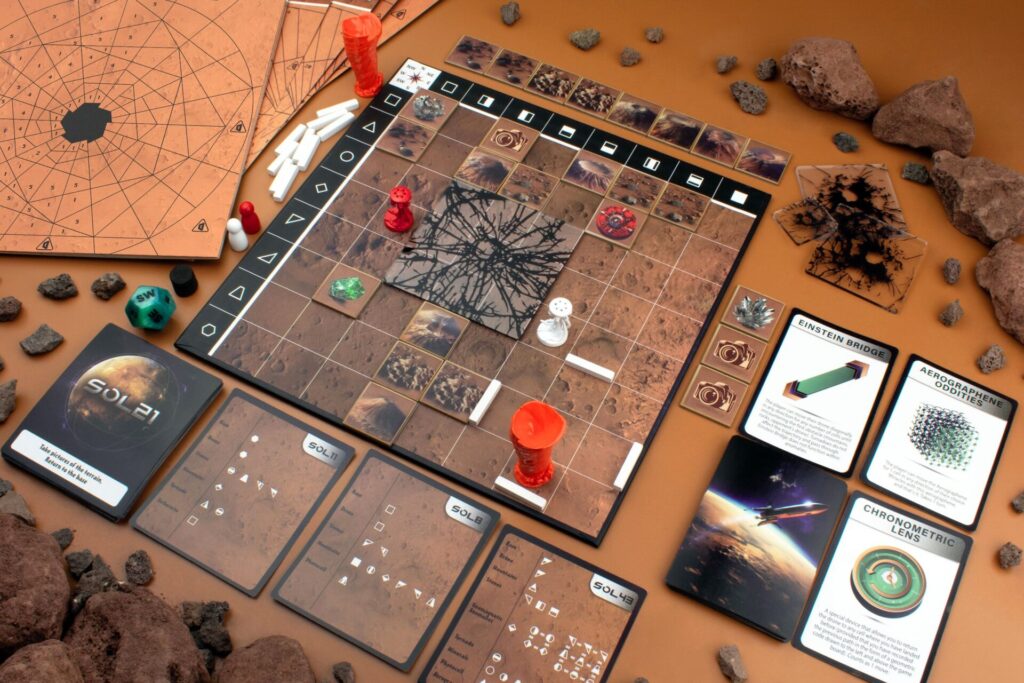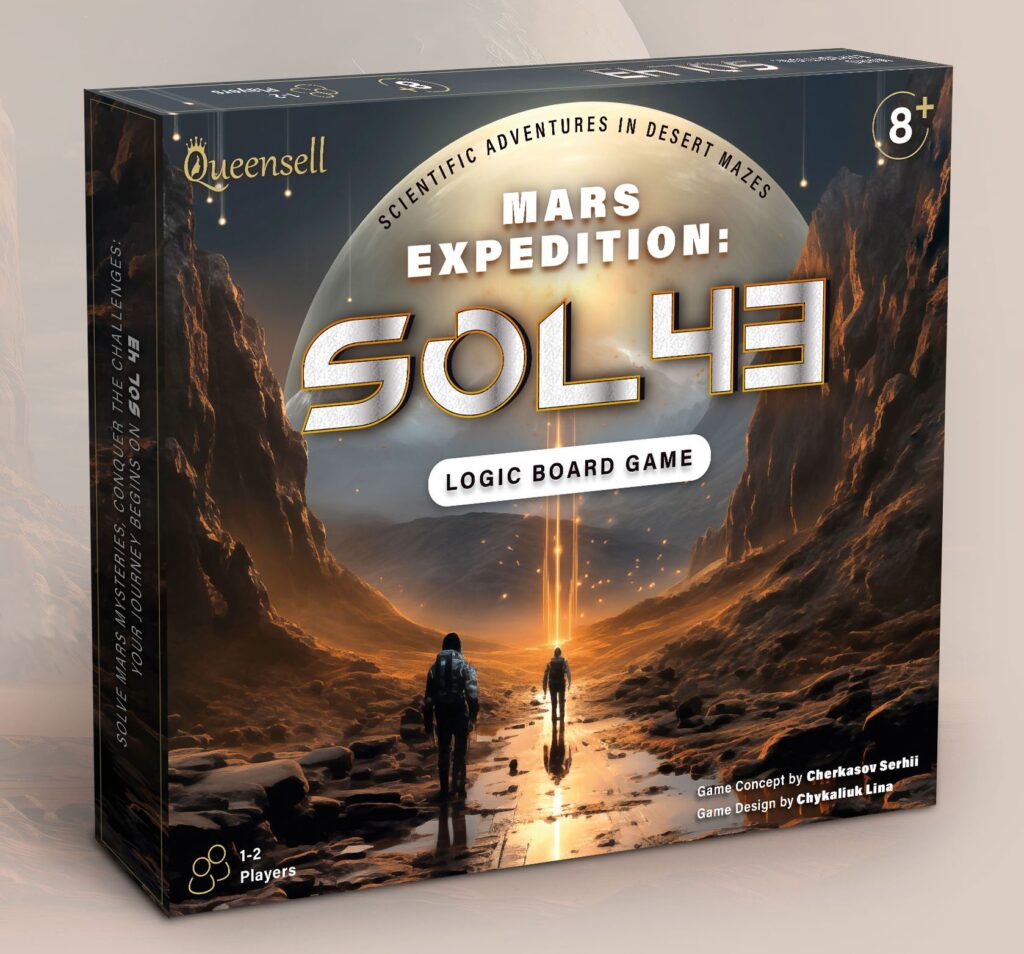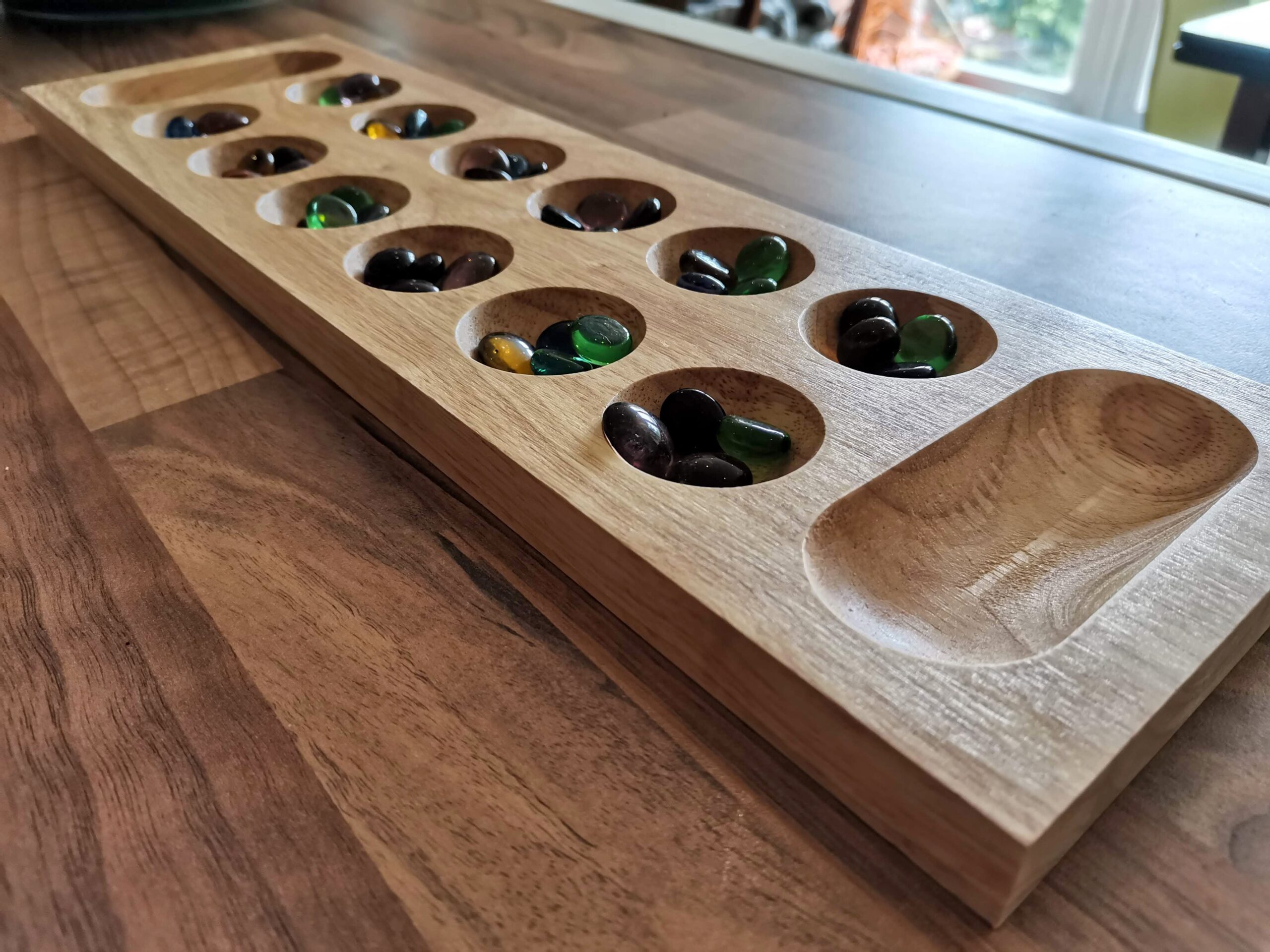Mars Expedition: SOL43 Review – Out of this world logic puzzles

A review copy of Mars Expedition: SOL43 was provided by Queensell. Thoughts & opinions are my own.
The prospect of life on other planets is a tantalising one. We search the furthest reaches of space looking for tell-tale signs of life, while also taking a closer look at celestial bodies closer to home. Take Mars, for example. The sheer idea that there might have once been something there has us, as humans, sifting through every last piece of scientific evidence available. And that’s where you come in, player. Mars Expedition: SOL43 pits you as someone in the combined roles of geologist, navigator, cryptologist, physicist and many more besides, exploring our red neighbour, trying to unlock its secrets.
The way it does this is unlike many other board games that you or I have played. Each of the game’s 43 missions (the clue’s in the title) sets up an initial board state, replete with obstacles, goals, and natural hazards. You, as the drone operator, need to successfully navigate the surface, do what needs to be done, and get back to base within a set number of turns. Usually, that is, there are exceptions, especially as the game progresses and gets more difficult, and boy, does it get difficult!

There’s an element of code-breaking too, in the setup for each card, but once you get the hang of it it doesn’t really have any impact on the game.
Knight sky
If you’ve been around puzzles for any length of time, you might be familiar with the concept of the Knight’s Tour. It’s a puzzle where, with a chessboard of n x n squares, you try to move a knight around the board, visiting each square only once. Knights have a very particular ‘L’ shaped movement, which is what you have to work around. SOL43’s core concept revolves around a similar dynamic.

You pilot drones during the game, and the drones have strict rules about movement. Firstly, they always move in a kind of ‘S’ shape. One step in any direction, another step perpendicular to that step, and a final step back in the original direction. You have to move the full three steps, you cannot move through mountains (duh), and while you can pass over rocky terrain, you can’t stop on it. If you pass through the zone of influence of a tornado (those cool plastic minis), it extends your flight by a step, which sounds useful, but more often than not just throws Martian grit in your gears.
Sometimes you just need to make it to a particular spot on the map to take a photo, before heading back. Sometimes you have to do more, like push a piece of aerographene to your base. The interactions between all of these things – especially the tornadoes – make life tricky at times. You’ll likely breeze through the first 10-15 missions in no time. They’re essentially the tutorial for the game, teaching you the basics through play, which is a great way to do things. The time taken to solve each successive mission after the early ones increases almost exponentially. Some of them are a case of trial and error, working your way through the puzzle to the solution. Some are adapting to random events like moving tornadoes, shifting terrain, and geomagnetic anomalies.
In each case, though, there’s always a solution. I found it tickled the same part of my brain that playing Freecell on old computers did back in the day. I can’t leave a puzzle. I know there’s a solution. There’s a finite number of things to try, I’ve just got to work out which one it is. Well, except puzzle 11982 in Freecell. That one’s impossible. But you get the idea.
Final thoughts
So, is Mars Expedition: SOL43 for you? This is relatively easy to answer, and it’s a different answer to a lot of my reviews here. If you like logic puzzles, you’ll get a real kick out of SOL43. The way the puzzles get harder and harder as they go, the way the things you learn in one puzzle help you in the next. If you like Sudoku, Nonograms, Chess problems, or anything of that ilk, you’ll likely really enjoy this.

Conversely, if your idea of a good time at a tabletop is random chaos, lots of interaction and plenty of shouting, this isn’t the game for you. Each card, each Sol, is a set puzzle that you need to solve. It’s a puzzle more than a normal board game. I’m not saying that to diminish it, far from it. I love puzzles, so the whole of SOL43 was a real treat for me. I’m just saying if you don’t enjoy them, this one isn’t likely to change your mind. It’s important to note here that there is a two-player mode, which introduces traditional game mechanisms like cards to change the flow of the game, but to me, the heart and soul of SOL43 lies in the solo mode.
The components are top-notch, the theme and game are original and different, and SOL43 is unique in my collection. I love that the game came from a passion project for the designer Serhii Cherkasov and his son. A shared love of space, discovery, and imagination helped spawn the game into being, and I love that. If you’re looking for something to get the little grey cells working on the red planet, check out SOL43 on Queensell’s website.
Enjoying this article? Consider supporting me.

Mars Expedition: SOL43 (2023)
Design: Serhii Cherkasov
Publisher: Queensell
Art: uncredited
Players: 1-2
Playing time: 5-200 mins













